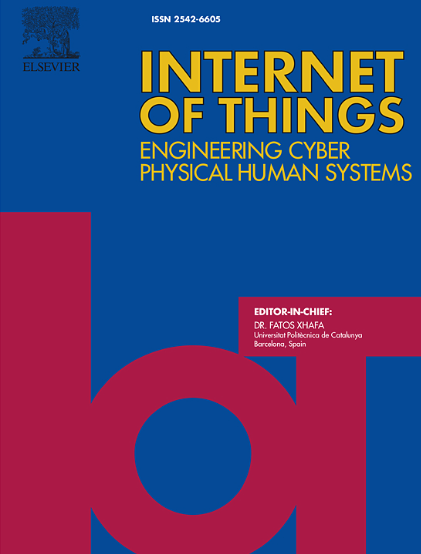使用多模态设备的智能环境中的隐私感知跌倒检测和警报管理
IF 6
3区 计算机科学
Q1 COMPUTER SCIENCE, INFORMATION SYSTEMS
引用次数: 0
摘要
跌倒是造成伤害和死亡的主要原因,尤其是在老年人中。虽然基于摄像头的跌倒检测系统已经取得了成功,但它们引发了严重的隐私问题。使用可穿戴传感器或热像仪的替代方案提供了相当的精度,但尚未结合准确的跌倒检测。此外,大多数研究都集中在跌倒检测上,而没有解决跌倒后用户的状况或个性化警报。本研究旨在开发一种利用可穿戴传感器和热像仪的隐私感知跌倒检测系统。此外,警报系统集成了语音助手和扬声器等设备,以评估用户摔倒后的状态并通知事件。该系统提高了检测精度,解决了隐私问题,并通过个性化响应增强了警报管理。我们提出了一个基于物联网(IoT)的系统,集成了前面提到的所有传感器和设备。基于边缘的计算实现了实时检测,互联网连接仅用于在摔倒时发送警报。评估了各种机器学习算法和传感器源,以确定它们对检测精度的影响。实验结果表明,基于三个视点的热图像的卷积神经网络的跌倒检测达到了F1-score在0.98以上。同样,传统的机器学习算法应用于可穿戴传感器数据也表现出了很高的性能(F1-score为0.93)。后处理技术有效地消除了误报,提高了可靠性和在真实环境中的采用。所提出的系统在解决隐私问题的同时确保了高精度。通过集成多模式设备和基于边缘的计算,它为智能环境提供了可扩展的实时解决方案,确保在跌倒后通过个性化警报及时响应。本文章由计算机程序翻译,如有差异,请以英文原文为准。

Privacy-aware fall detection and alert management in smart environments using multimodal devices
Falls are a leading cause of injury and mortality, especially among the elderly. While camera-based fall detection systems have shown success, they raise significant privacy concerns. Alternatives using wearable sensors or thermal cameras offer comparable accuracy but have yet to be combined for accurate fall detection. Additionally, most research focuses on fall detection without addressing post-fall user’s condition or personalized alerts. This study aims to develop a privacy-aware fall detection system leveraging wearable sensors and thermal cameras. In addition, an alert system integrates devices such as voice assistants and speakers to assess the user’s status after the fall and notify the event. The system improves detection accuracy, addresses privacy concerns, and enhances alert management through personalized responses. We propose an Internet of Things (IoT)-based system integrating all sensors and devices previously mentioned. Edge-based computation enables real-time detection, with Internet connectivity used only for sending alerts in case of a fall. Various machine learning algorithms and sensor sources are evaluated to determine their impact on detection accuracy. Experimental results show that fall detection using a convolutional neural network with thermal images from three viewpoints achieves an F1-score above 0.98. Similarly, traditional machine learning algorithms applied to wearable sensor data showed high performance (0.93 F1-score). Post-processing techniques effectively remove false positives, improving reliability and adoption in real environments. The proposed system ensures high accuracy while addressing privacy concerns. By integrating multimodal devices and edge-based computing, it offers a scalable, real-time solution for smart environments, ensuring timely responses through personalized alerts after falls.
求助全文
通过发布文献求助,成功后即可免费获取论文全文。
去求助
来源期刊

Internet of Things
Multiple-
CiteScore
3.60
自引率
5.10%
发文量
115
审稿时长
37 days
期刊介绍:
Internet of Things; Engineering Cyber Physical Human Systems is a comprehensive journal encouraging cross collaboration between researchers, engineers and practitioners in the field of IoT & Cyber Physical Human Systems. The journal offers a unique platform to exchange scientific information on the entire breadth of technology, science, and societal applications of the IoT.
The journal will place a high priority on timely publication, and provide a home for high quality.
Furthermore, IOT is interested in publishing topical Special Issues on any aspect of IOT.
 求助内容:
求助内容: 应助结果提醒方式:
应助结果提醒方式:


